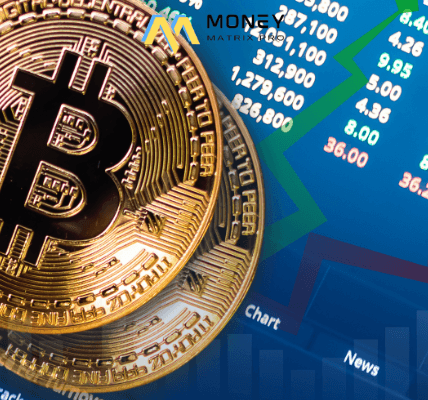Understanding Cryptocurrency and Decentralized Finance (DeFi)
Cryptocurrency is a digital form of currency that utilizes cryptography for secure transactions, controls the creation of additional units, and verifies the transfer of assets. The foundational technology behind cryptocurrency is blockchain, a decentralized ledger that records all transactions across a network of computers. This innovative technology ensures transparency, security, and immutability, making it a revolutionary force in the modern financial landscape.
The emergence of Decentralized Finance, commonly referred to as DeFi, marks a significant paradigm shift in the financial industry. Unlike traditional financial systems, which rely on intermediaries such as banks and brokers, DeFi operates on a decentralized infrastructure. This means that financial services like lending, borrowing, and trading are conducted directly between participants using smart contracts on a blockchain. As a result, users can interact with these services without the need for central authorities, leading to a level of autonomy not typically available in conventional finance.
One of the most notable benefits of DeFi is its ability to reduce costs associated with financial transactions. By eliminating intermediaries, participants can circumvent the hefty fees that traditional banks often impose. This cost efficiency makes financial services more accessible to a broader audience, including those in underserved communities who may lack access to traditional banking facilities. Moreover, DeFi platforms typically operate on a 24/7 basis, allowing users to engage in financial activities without constraints tied to traditional banking hours.
In addition to cost reduction and increased accessibility, DeFi promotes financial inclusion by providing opportunities for individuals to lend or borrow cryptocurrencies, trade assets, or earn interest on their holdings without traditional barriers. As the DeFi ecosystem continues to evolve, its transformative potential could redefine the principles of finance and democratize access to capital, paving the way for a more inclusive financial future.
Stablecoins: Bridging the Gap Between Volatility and Usability
Stablecoins have emerged as a revolutionary financial instrument within the cryptocurrency ecosystem, designed to offer the benefits of digital currencies while mitigating the inherent price volatility typically associated with them. These cryptocurrencies are pegged to stable assets, such as fiat currencies like the US dollar or commodities such as gold, ensuring that their value remains relatively constant. This characteristic makes stablecoins particularly well-suited for daily transactions, facilitating a seamless transition between traditional finance and the expanding cryptocurrency landscape.
The utility of stablecoins extends beyond mere price stability; they play a crucial role in making cryptocurrencies viable for everyday purchases and financial transactions. For instance, individuals can utilize stablecoins to make remittances, allowing them to send money across borders with minimal fees and without the waiting times often associated with traditional banks. The combination of low transaction costs and rapid processing times enhances the user experience, making stablecoins an attractive option for both consumers and businesses alike.
Moreover, stablecoins contribute significantly to financial inclusivity by providing unbanked populations access to a digital method of trade and investment. By leveraging the accessible nature of stablecoins, individuals without traditional bank accounts can participate in the global economy and engage in services such as international trade. This democratization of finance presents an opportunity to empower marginalized communities, offering them tools previously restricted to those with access to conventional banking systems.
In essence, stablecoins serve as a bridge that connects the existing financial framework with the burgeoning decentralized finance (DeFi) sector. Their ability to provide stability and usability fosters trust among users, paving the way for further integration of cryptocurrency into everyday financial practices. As the ecosystem continues to evolve, stablecoins will likely play an even more pivotal role in shaping the future of finance.
The Importance of Blockchain for Transparency in Financial Transactions
In the rapidly evolving landscape of finance, blockchain technology has emerged as a cornerstone for enhancing transparency and trust in financial transactions. By utilizing a decentralized and distributed ledger, blockchain creates immutable records of all transactions, ensuring that once data is recorded, it cannot be altered retroactively. This characteristic significantly mitigates the potential for fraud, as any attempts to manipulate data would require consensus from the entire network, making illicit activities easily detectable.
Moreover, blockchain’s inherent features allow for real-time auditing of financial transactions. This capability is particularly beneficial for regulatory compliance, as it provides regulatory bodies with immediate access to transaction histories, reducing audit times and costs associated with traditional compliance methods. Financial institutions can leverage blockchain technology to streamline their operations, enabling faster transaction settlements and improving overall efficiency. This newfound transparency can instill confidence among stakeholders, from customers to investors, fostering a more robust financial ecosystem.
Numerous applications of blockchain in financial services illustrate its transformative potential. For instance, cross-border payments benefit significantly from blockchain’s ability to provide an accessible and auditable trail of transactions, drastically reducing processing time and costs compared to conventional methods. Additionally, the implementation of blockchain in supply chain financing enables stakeholders to verify goods and transactions transparently, ensuring trust throughout the supply chain process.
Furthermore, Decentralized Finance (DeFi) platforms are redefining traditional finance by using blockchain to automate and democratize lending, borrowing, and trading. These platforms eliminate the need for intermediaries, reducing overhead costs and increasing transaction speed while maintaining a transparent operational framework. Ultimately, the integration of blockchain technology into the financial system is not merely an enhancement; it is a necessary evolution towards a more transparent, trustworthy, and efficient financial landscape.
Future Prospects: How Crypto and DeFi Could Replace Traditional Finance
The rapid evolution of cryptocurrency and decentralized finance (DeFi) has the potential to significantly reshape the landscape of traditional finance. As these technologies continue to mature, they present both opportunities and challenges that could dictate their integration into existing financial systems. One of the most significant advantages of crypto and DeFi is their capacity for decentralization, which can lead to improved accessibility and inclusivity for unbanked populations globally. This could alleviate reliance on traditional banking institutions, offering a more equitable alternative.
However, the pathway toward widespread adoption of these innovations is fraught with challenges. Regulatory hurdles represent a substantial obstacle, as governments around the world are still grappling with how to framework and legislate these emerging technologies. The lack of adequate regulations can lead to uncertainty, discouraging institutional investors and mainstream users from participating extensively in the crypto market. Furthermore, security concerns cannot be overlooked, as numerous instances of hacking and fraud in the DeFi space have rendered users wary of engaging with these platforms.
Technological infrastructure also plays a critical role in this dynamic. Scalability issues currently limit the transaction capabilities of many blockchain networks, particularly during periods of high demand. For financial systems built on these technologies to function effectively, enhancements in speed, capacity, and interoperability with existing financial services are essential. Moreover, user education is crucial to demystify crypto and DeFi for the general populace, ensuring that they are equipped to engage with these systems safely.
Ultimately, while traditional finance faces numerous challenges in accommodating the integration of crypto and DeFi, the potential benefits—including enhanced transparency, reduced fees, and increased competition—may drive a gradual transition toward a more decentralized financial ecosystem. This future promises not only to reshape economic landscapes but also to create a more inclusive system for individuals and businesses alike.





